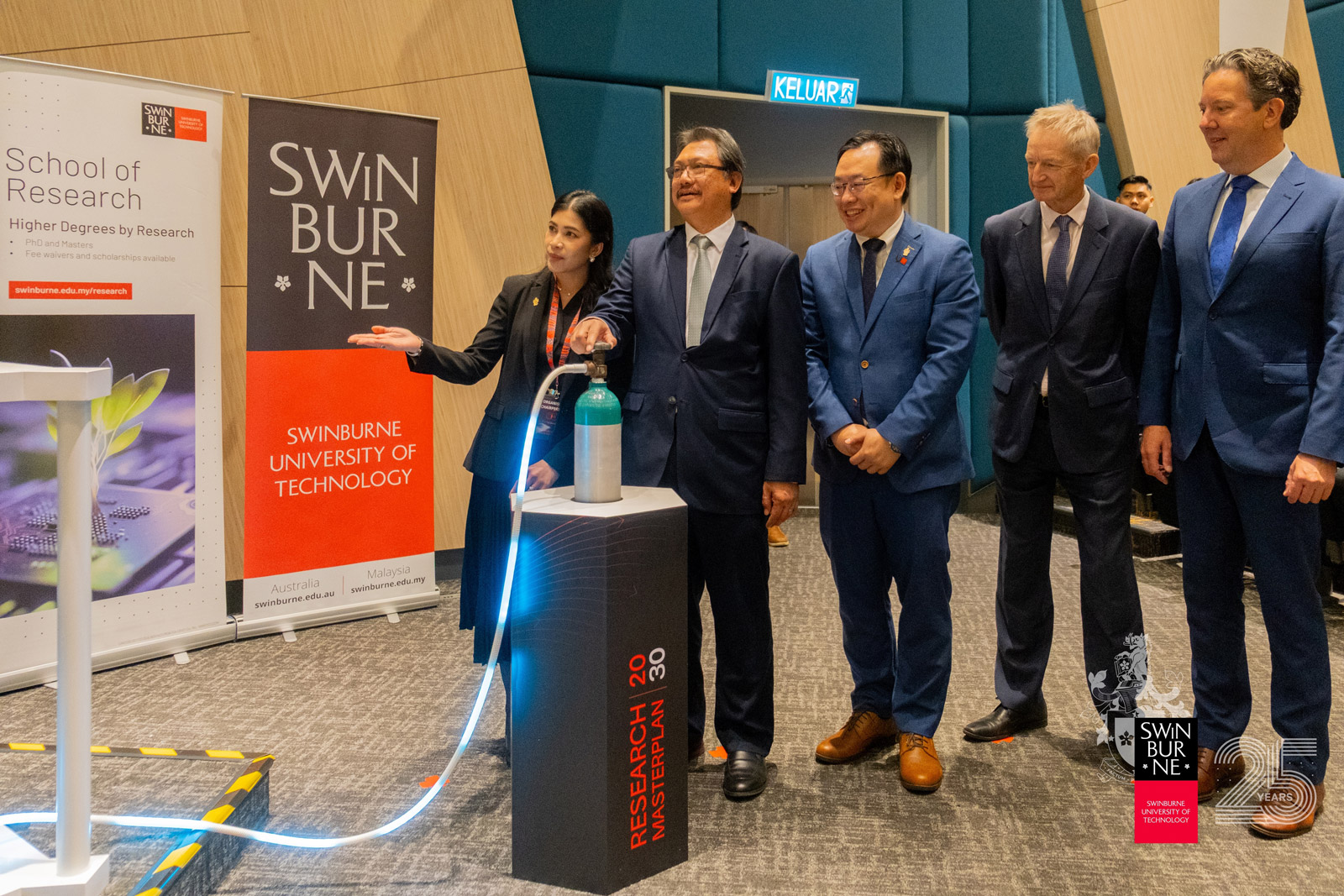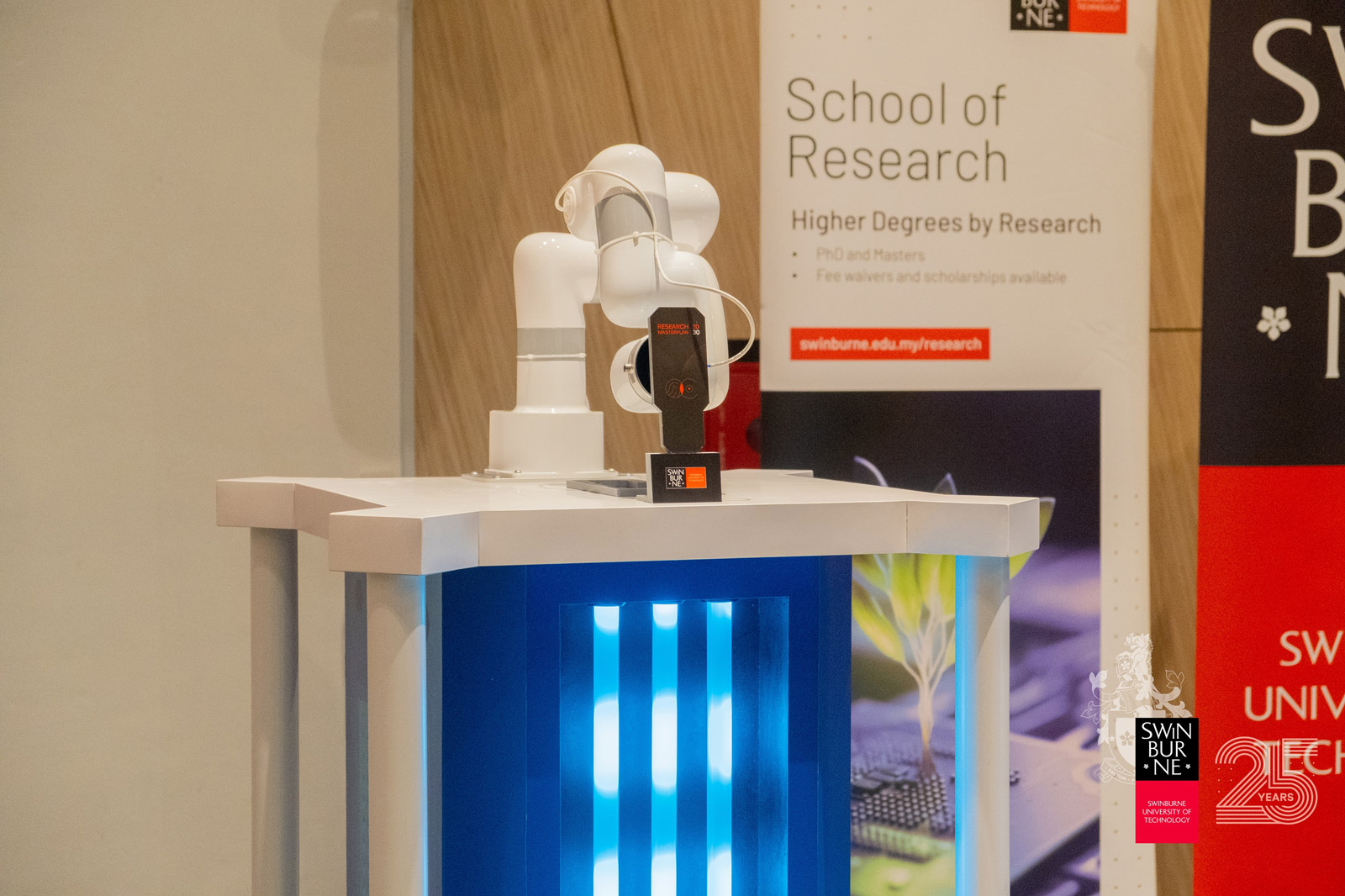KUCHING – Swinburne University of Technology Sarawak Campus today launched its Swinburne Sarawak Research Masterplan 2030, a bold strategic roadmap that will guide the university’s research vision and priorities over the next decade.
The launch marks a major milestone in Swinburne Sarawak’s journey to becoming a research institution of national and regional significance.
The launch ceremony, held at Swinburne Sarawak, was officiated by The Honourable Datuk Dr Haji Hazland bin Haji Abang Hipni, Deputy Minister of Energy and Environmental Sustainability Sarawak, and attended by members of Swinburne Sarawak’s Board of Directors and Council, industry partners, researchers, and students.
In his officiating address, Datuk Dr Hazland described the Research Masterplan 2030 as “a timely, bold, and strategic document”, commending Swinburne Sarawak for its strong alignment with Sarawak’s Post Covid-19 Development Strategy (PCDS) 2030. He praised the university’s vision of pursuing research that is “impactful, inclusive, and innovative” – one that responds to both local and global challenges.
“Swinburne Sarawak stands out as a campus that is globally informed but locally impactful. The Research Masterplan reflects a seamless integration with Swinburne Melbourne’s global research ecosystem, while being firmly rooted in the local context,” he said.
He further highlighted how the Masterplan’s focus areas – including AI-driven innovation, hydrogen and biomass energy, digital health, circular economy, and fostering an inclusive, innovative society – can create meaningful impact for the community.
The Deputy Minister also emphasised the critical role of collaboration between government, academia, and industry, calling for collective commitment toward advancing Sarawak’s transformation agenda.
“Research cannot thrive in isolation. It requires deliberate and sustained collaboration,” he stressed. “Let this Masterplan be more than a publication – it must be a platform for strengthened partnerships, open dialogue, and co-created solutions.”

The Honourable Datuk Dr Haji Hazland bin Haji Abang Hipni (second left) officially launches the Swinburne Sarawak Research Masterplan 2030. Also seen are (from left) Professor Dr Ida Fatimawati bt Adi Badiozaman; Ir Professor Lau Hieng Ho; Professor John Wilson, member of Swinburne Sarawak’s Board of Directors; and Dr Douglas Proctor, Pro Vice-Chancellor (Global Engagement), Swinburne University of Technology.
The launch featured inspiring speeches by Ir Professor Lau Hieng Ho, Pro Vice-Chancellor and Chief Executive Officer of Swinburne Sarawak, and Professor Dr Ida Fatimawati bt Adi Badiozaman, Deputy Pro Vice-Chancellor (Research) of Swinburne Sarawak. Both leaders highlighted Swinburne’s commitment to research that goes beyond academic output to deliver real-world impact – from smart mobility and digital health to renewable energy and inclusive innovation.
“At Swinburne, research is not just about knowledge generation – it’s about transformational impact,” said Professor Lau.
Professor Ida echoed this by stating, “Research must be rooted in curiosity and courage – it’s about people and technology working hand-in-hand, especially when communities are placed at the heart of innovation.”
The event’s launch gimmick – led by Ir Associate Professor Dr Hudyjaya Siswoyo Jo, Director, Centre for Digital Futures, and his team – was more than a visual spectacle; it symbolised the transformative power of hydrogen technology and its role in shaping a sustainable future for Sarawak. It underscored Swinburne’s steadfast commitment to advancing clean energy innovation and contributing to the state’s green economy agenda. Aligned with the strategies of the Masterplan, it reaffirmed the university’s mission to deliver research with real-world impact – for industry, for community, and for a better tomorrow.

A part of the launch gimmick.
The event also celebrated Swinburne Sarawak’s School of Research and the many academics and staff who contributed to shaping the Masterplan. The document is the result of a highly consultative process involving feedback and insights from researchers, industry partners, and key stakeholders.
As Swinburne Sarawak embarks on the implementation of its Research Masterplan 2030, the university extends an open invitation to collaborators across sectors to join in co-creating solutions that will shape a resilient, inclusive, and future-ready Sarawak.
This event was one of Swinburne Sarawak’s flagship events for the year in conjunction with its 25th anniversary – a significant milestone in its journey of driving education, championing research excellence, and fostering innovation. Over the past quarter-century, Swinburne Sarawak has empowered thousands of students to achieve their aspirations while playing a pivotal role in nurturing the development of future leaders across industries. The university remains steadfast in its commitment to shaping the future through world-class learning and teaching, innovation, and industry collaboration.
For more information on Swinburne Sarawak, visit its website, Facebook page (@swinburnesarawak), Instagram page (@swinburnesarawak), X page (@Swinburne_Swk), TikTok page (@swinburnesarawak) or YouTube channel (Swinburne Sarawak).


